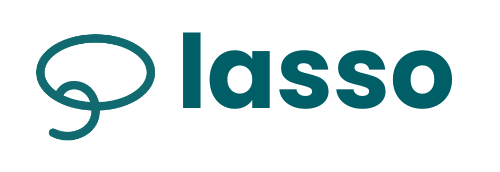Supplier Relationship Management (SRM) is a strategic approach to managing an organization’s interactions with its suppliers. By fostering strong, collaborative relationships, SRM helps businesses not only optimize their supply chain but also proactively identify and mitigate supplier-specific risks. These risks—ranging from financial instability to operational disruptions—can significantly impact a company’s performance if left unaddressed. In this blog post, we’ll explore how SRM can be leveraged to assess and manage supplier-specific risks effectively.
What Are Supplier-Specific Risks?
Supplier-specific risks are potential issues tied directly to individual suppliers that could disrupt the supply chain. Common examples include:
Financial Instability: A supplier facing cash flow problems or bankruptcy may fail to deliver goods or services on time.
Operational Challenges: Inefficient processes, capacity constraints, or quality control issues can lead to delays or subpar products.
Geopolitical or Environmental Risks: Suppliers in regions prone to political unrest, natural disasters, or regulatory changes may face disruptions.
Compliance and Ethical Issues: Suppliers failing to meet regulatory standards or engaging in unethical practices can expose your business to legal or reputational risks.
Dependency Risks: Over-reliance on a single supplier can leave a company vulnerable if that supplier encounters issues.
Effective SRM helps organizations anticipate these risks and implement strategies to mitigate them before they escalate.
The Role of SRM in Risk Identification
SRM provides a structured framework for assessing and monitoring suppliers, enabling businesses to identify risks early. Here’s how SRM contributes to risk identification:
1. Comprehensive Supplier Profiling
SRM begins with gathering detailed information about suppliers, including their financial health, operational capabilities, and market reputation. By creating robust supplier profiles, companies can:
Evaluate financial stability through credit reports or financial statements.
Assess operational performance via site visits, audits, or performance metrics.
Identify potential red flags, such as reliance on sub-suppliers or geographic vulnerabilities.
2. Ongoing Performance Monitoring
SRM involves continuous monitoring of supplier performance using Key Performance Indicators (KPIs) like delivery timeliness, quality standards, and responsiveness. By tracking these metrics, businesses can:
Detect early signs of operational issues, such as declining quality or missed deadlines.
Use data-driven insights to predict potential disruptions.
3. Risk Scoring and Segmentation
SRM frameworks often include risk-scoring models that categorize suppliers based on their risk levels. For example:
High-risk suppliers might operate in volatile regions or have a history of inconsistent performance.
Low-risk suppliers demonstrate strong financials and reliable operations. By segmenting suppliers, companies can prioritize their monitoring and mitigation efforts.
4. Collaboration and Transparency
Building strong relationships through SRM encourages open communication with suppliers. Regular check-ins, joint business reviews, and collaborative planning can uncover risks that might not be evident through data alone, such as upcoming regulatory changes or internal challenges a supplier is facing.
Mitigating Supplier-Specific Risks with SRM
Once risks are identified, SRM provides tools and strategies to mitigate them effectively. Here are key approaches:
1. Diversifying the Supplier Base
To reduce dependency risks, SRM emphasizes diversifying the supplier portfolio. This might involve:
Onboarding alternative suppliers for critical components.
Sourcing from multiple geographic regions to avoid localized disruptions.
Balancing workloads across suppliers to prevent overburdening a single partner.
2. Contractual Safeguards
SRM includes negotiating robust contracts that address potential risks. For instance:
Include penalty clauses for non-compliance or delays.
Require suppliers to maintain contingency plans for disruptions.
Establish clear quality and delivery expectations to minimize operational risks.
3. Collaborative Risk Management
SRM fosters partnerships where suppliers and buyers work together to address risks. This can include:
Jointly developing contingency plans for supply chain disruptions.
Conducting regular risk assessments with suppliers to stay ahead of emerging issues.
Sharing market intelligence to anticipate geopolitical or economic challenges.
4. Technology and Data Analytics
Modern SRM platforms leverage technology to enhance risk mitigation:
Predictive Analytics: Use historical data to forecast potential supplier issues.
Real-Time Monitoring: Track supplier performance and external factors (e.g., weather, political events) in real time.
Automation: Streamline audits, compliance checks, and reporting to ensure proactive risk management.
5. Building Resilience Through Relationships
Strong supplier relationships, a cornerstone of SRM, create a foundation for resilience. Suppliers who trust their buyers are more likely to:
Provide early warnings about potential disruptions.
Prioritize your orders during shortages or crises.
Collaborate on innovative solutions to mitigate risks.
Best Practices for Implementing SRM in Risk Management
To maximize the effectiveness of SRM in managing supplier-specific risks, consider these best practices:
Invest in SRM Technology: Adopt SRM software to centralize supplier data, automate risk assessments, and enable real-time monitoring.
Conduct Regular Risk Assessments: Schedule periodic reviews to update supplier risk profiles and adapt to changing conditions.
Train Your Team: Equip procurement and supply chain teams with the skills to implement SRM effectively, including negotiation and risk analysis.
Foster a Culture of Collaboration: Encourage open communication and mutual trust with suppliers to facilitate risk-sharing and problem-solving.
Stay Agile: Be prepared to adjust strategies as new risks emerge, whether due to market shifts or global events.
Conclusion
Supplier-specific risks are an inevitable part of supply chain management, but they don’t have to derail your operations. By leveraging SRM, businesses can proactively identify vulnerabilities, build stronger supplier relationships, and implement targeted mitigation strategies. From comprehensive profiling to advanced analytics, SRM equips organizations with the tools to navigate risks confidently, ensuring a resilient and efficient supply chain.
By prioritizing SRM, companies not only safeguard their operations but also unlock opportunities for innovation and growth through stronger supplier partnerships. Start integrating SRM into your risk management strategy today to stay ahead in an increasingly complex global market.
Get the White Paper: Streamlining Procurement Processes for SMB Manufacturers
Get instant access to our white paper on Must-Know Procurement Tips for SMB Manufacturers by filling out the form below.
Get in Touch
Learn more about Lasso supply chain solutions for SMB manufacturers
Please complete the form and we will be in touch as soon as possible.







